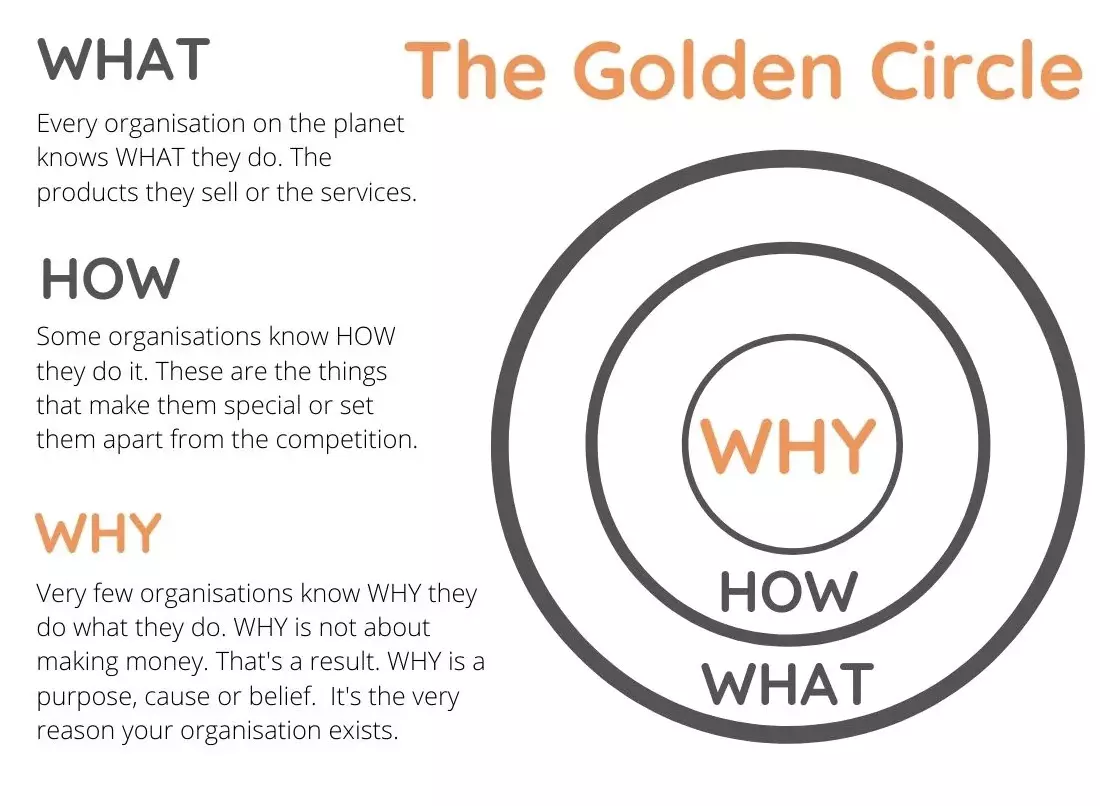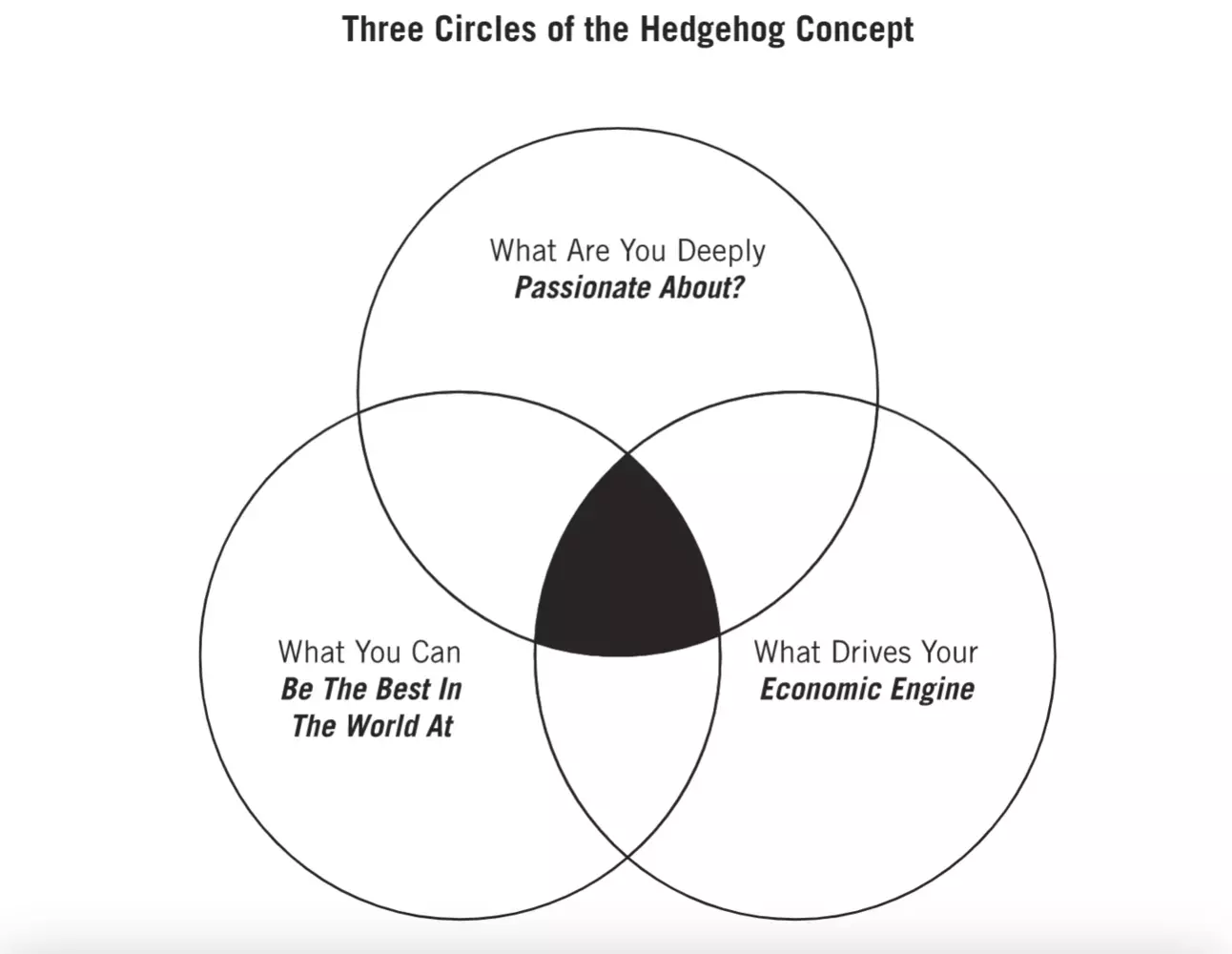Comments
- No comments found

Unless you’ve been living under a rock, you’ll have heard of author Simon Sinek.
He took the business world by storm in 2009 with his lecture, ‘How Great Leaders Inspire Action’. This became the 3rd most-watched TED talk of all time. In it, he unveiled his ‘Golden Circle’ with ‘Why’ at its heart. Sinek’s book Start with Why: How Great Leaders Inspire Everyone to Take Action became a best-seller and his views were widely accepted by companies across the globe. An obsession with ‘Purpose’ began. Leaders Eat Last wasn’t universally admired but he is back on form with his latest book The Infinite Game: How Great Businesses Achieve Long-lasting Success was published late last year and here he applies game theory to explore how amazing businesses achieve lasting success.
It is now a mainstream belief that businesses with a strong purpose grow faster. Other writers have developed this concept, such as David Hieatt in his book ‘Do Purpose – Why Brands with a Purpose Do Better and Matter More’. (I had David on The Melting Pot here). This is a belief I share. There’s no arguing the importance of purpose for developing business culture. I have seen with my own eyes the difference it can make to a business. I have even written about how business leaders can find their core purpose in their business and find their personal north star. Another podcast guest with a clear purpose is Simon La Fosse. He started, La Fosse Associates, his recruitment firm with a very clear purpose – that treating people well is not just the right thing to do, it’s a better way to do business. Simon talks about his journey to date, his plans for the future and a potential float of the business. We discuss what happened last year with recruitment and from their perspective, even in the tech sector, where they are a specialist, they lost half of their revenue. He also shares why he stepped away from being the CEO and why he doesn’t believe he’s really a leader.
Simon Sinek sets out to discover why companies like Apple achieved such extraordinary success while others, with the same resources, failed. He found that less successful companies often started with ‘What’, then moved to ‘How’ and many neglected to even mention ‘Why’. Some hadn’t the faintest clue why they did what they did.
In Sinek’s opinion, the reason Apple was so successful was it started with ‘Why’. This was at the core of Apple’s marketing (pardon the pun!) and the driving force behind its business operations. As a result, he says, Apple was able to attract customers who shared its fundamental beliefs.
From this, he designed his ‘Golden Circle’ theory of building strategy.

The Golden Circle by Simon Sinek
All well and good, but I think there’s something missing from the golden circle. Apple dominates the global handset market by capturing 66% of industry profits and 32% of the overall handset revenue. But crucially, they weren’t trying to sell a smartphone to everyone. They are targeting a unique value proposition to a tight group of customers for whom the Apple ecosystem is part of their self-worth and their projection into the world.
When Steve Jobs returned and created the world-famous ‘Think Different” campaign, Apple products were not the best. In fact, they were a bit shit. But Apple had identified a sub-set of people – creatives, misfits, dreamers – for whom owning a Mac said something about the sort of off-the-wall people they wanted to be. To my mind, this proves that you can’t have a ‘why’ unless you know ‘who’ your ‘why’ is going to appeal to.
But where I disagree fundamentally with Simon Sinek is his central message of ‘starting with why’. I don’t believe this isn’t where you should start at all.
Whilst the Golden Circle of ‘Why’, ‘How’ and ‘What’ is important, I think it’s missing something even more fundamental. A fourth circle – ‘Who’ – at the very centre. This is where I believe you should start. You’re sitting in an Executive Team meeting. The conversation turns to your customers. What thoughts do you have in your head? And are these the same as everyone else’s? I bet they aren’t. If there’s one thing that most CEOs struggle with, it’s knowing who buys their company’s products. We ask our CEO clients to tell us about their core customer. Typically, they’ll give us two responses. The first is, ‘We don’t have one core customer, we have loads’. And the other? We’ll hear all about their average customer or their most numerous type of customer. Neither of these is their true core customer.
So instead, we ask the client to focus on a customer that represents the majority of their gross profit. Because this is the type of core customer that will drive future growth. It may not be immediately obvious. As Marshall Goldsmith said in his book of the same title, ‘What got you here won’t get you there’. It’s time to get deliberate about exactly where your future growth will come from. And it may not be what’s got you to this point.
Finding the right core customer could be the biggest single difference you make to your organisation. For some of our clients, it’s resulted in them doubling their business in 12 months.
Surely your over-arching goal is to build a successful commercial enterprise? Well, I don’t think you can do this starting with ‘Why’. Contrast Simon Sinek’s view of strategy with that of Jim Collins – another great business author and speaker. His ‘Hedgehog Concept’ is something I refer to over and over again with clients. He believes that a successful strategy is formed from overlapping 1) What you are deeply passionate about (your ‘Why’) with 2) what you can be best at in the world and 3) what best drives your economic engine. It’s this third point that’s missing from Simon Sinek’s golden circle viewpoint. The commercial imperative that should drive every business.

Back in 1954, the sage-like grandfather of modern business, Peter Drucker, said, ‘There is only one valid definition of a business purpose: to create a customer’. I think this still holds true and yet many companies struggle to understand this fundamental concept. There’s little point in finding your meaning for existence and working out what you’re going to do, and how if this doesn’t allow us to create a compelling value proposition that appeals to the right customers.
And yet this happens time and again. The CEO is on a mission but his company’s customers are leaving in droves. They don’t care. Disaster can strike when there’s no clear idea about Core Customer. Take Chip Wilson, ex-CEO of Lululemon. His fat-shaming remarks about Lululemon’s yoga pants were a PR catastrophe for the company. He’d lost his grip on who his core customers were and, worse still, ended up insulting a good many of them. The company has never truly recovered.
Ultimately, you’re trying to create a tribe that loves what you do and feel like they belong when they experience your company for the first time. I believe this should start with your staff. First and foremost, do your employees feel like they’re in the right place? And then, do your existing customers feel happy they made the right choice by picking your company? Only after you’ve got these two elements right will you attract new customers.
This is a different way of approaching marketing. Too often, the focus is on attracting new people through the door and then, when they arrive, losing them because everything’s not quite in sync. Don’t build a recruitment process that attracts the wrong people. They’ll leave after a few months because your company is different from the expectation you created.
To build a tribe of customers, you need to get laser-focused on who these people are. Your guiding principle should be, ‘Who are the customers that will buy from us at maximum profit?’ Most of the time, companies don’t have this. Since they started trading, they’ve attracted a broad array of customers, all looking for different things. This makes it hard to narrow down to the Core Customer that will ultimately drive their growth.
When we get to the nitty-gritty of working out their Core Customer, I guide clients to focus first and foremost on the ones who buy at maximum profit. Perhaps these customers buy the fullest range of services or have the potential to do so. Then we narrow it down to one who best represents the customers they need to target. We give them a name. A recent example is ‘Andrew’. Then we start to profile this customer archetype – what is Andrew trying to do in his business? Does he have a transformational challenge? Maybe he’s an agent of change in his organisation? What insights tell his story? What is his background?
Then I get them to work out how Andrew is likely to buy – and where they fit in this buying journey. Finally, and most importantly, how do they want Andrew to feel when he signs on the dotted line? This is why you need to start with ‘Who’ before working out your ‘Why’. Otherwise, you lose the connection between how you want them to feel when they do business with you and your purpose. These need to interlock.

A massive lightbulb moment is when firms realise they only need to attract a small number of these Core Customers, maybe 10 or 20, to double their business in the next three years. Brilliant! In the past, their strategy has been focused on average customers. Now, they can tailor their entire approach to the needs of a specific group of Core Customers.
At Peer 1 Hosting, we had 13,400 customers globally but only 500 of these were high value. We worked out we only needed another 100 net annually to achieve our growth plans of doubling in three years. So, we got really focused on who they were and the value proposition they needed from us. This had far-reaching consequences – our core values and purpose were aligned around these needs. They guided every decision we made. We looked for staff who shared these values and could ensure our Core Customers knew, liked and trusted us.
If you’re using NPS® (Net Promoter Score), you need to make sure your score is higher for your Core Customer than any of your competitors. This is about being different. You’re not trying to be brilliant for every customer or the biggest or the best. You’ve identified attributes for your business that you know your Core Customer values and by delivering these, you’ll win. Hear from the founder of NPS Fred Reichheld on why NPS and referrals are how to grow your business in this episode of the podcast.
This is how you create a niche. By getting inside the heads of a small number of high-value customers, you’ll own this small segment. Eventually, you will become the number one supplier of your ‘Who’. It’s like mining for a rich vein of gold. Think small, not big, and use a feelings model to get there. This will be way more effective than constantly selling the features and benefits of your product.
So, take my advice. Don’t ignore Simon Sinek entirely. BUT start with ‘Who’ not ‘Why’. By doing this, you’ll find a profitable purpose that drives the economic engine of your business. After all, you’re not just doing this for love. Profit is also important!
If you’re still looking for help on finding your purpose here is another Ted Talk by Katie McNerney.
Dominic Monkhouse is a proven architect of business growth with a demonstrable track record. As managing director, he scaled two UK technology companies from zero revenue to £30 million in five years. Since 2014, Dominic has worked as a CEO and executive team coach, helping ambitious CEOs and their leadership teams reach their full potential and achieve sustainable growth. He is the host of “The Melting Pot with Dominic Monkhouse” where he talks with some extraordinary thought leaders, fellow business authors, and CEOs to absorb their wisdom. Dominic is the author of F**K PLAN B: How to scale your technology business faster and achieve plan A, an exciting blueprint for cultural change and business transformation.
Leave your comments
Post comment as a guest